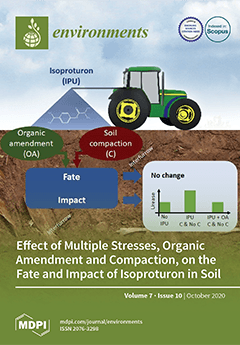Finding a reliable method to predict soil metal bioavailability in aged soil continues to be one of the most important problems in contaminated soil chemistry. To investigate the bioavailability of metals aged in soils, we used roadside soils that had accumulated metals from vehicle emissions over a range of years. We collected topsoil (0–10 cm) samples representing new-, medium- and old-aged roadside soils and control site soil. These soils were studied to compare the ability of the diffusive gradients in thin films technique (DGT), soil water extraction, CaCl
2 extraction, total metal concentrations and optimised linear models to predict metal bioavailability in wheat plants. The response time for the release of metals and the effect on metal bioavailability in field aged soils was also studied. The DGT, and extractable metals such as CaCl
2 extractable and soil solution metals in soil, were not well correlated with metal concentrations in wheat shoots. In comparison, the strongest relationships with concentrations in wheat shoots were found for Ni and Zn total metal concentrations in soil (e.g., Ni r = 0.750,
p = 0.005 and Zn r = 0.833,
p = 0.001); the correlations were still low, suggesting that total metal concentrations were also not a robust measure of bioavailability. Optimised linear models incorporating soil physiochemical properties and metal extracts together with road age as measure of exposure time, demonstrated a very strong relationship for Mn R
2 = 0.936; Ni R
2 = 0.936 and Zn R
2 = 0.931. While all the models developed were dependent on total soil metal concentrations, models developed for Mn and Zn clearly demonstrated the effect of road age on metal bioavailability. Therefore, the optimised linear models developed have the potential for robustly predicting bioavailable metal concentrations in field soils where the metals have aged in situ. The intrinsic rate of release of metals increased for Mn (R
2 = 0.617,
p = 0.002) and decreased for Cd (R
2 = 0.456,
p = 0.096), Cu (R
2 = 0.560,
p = 0.083) and Zn (R
2 =0.578,
p = 0.072). Nickel did not show any relationship between dissociation time (Tc) and road age. Roadside soil pH was likely to be the key parameter controlling metal aging in roadside soil.
Full article





